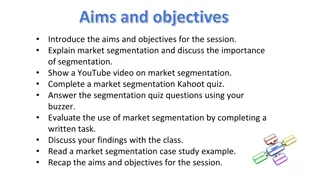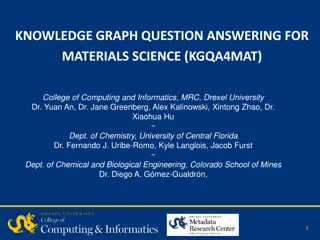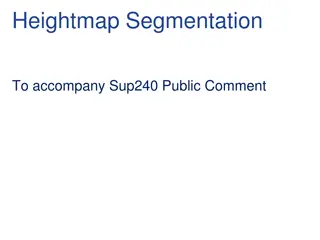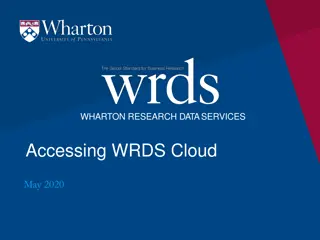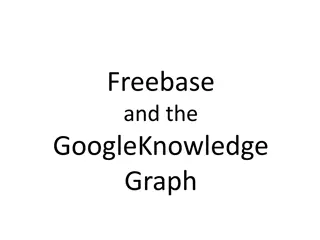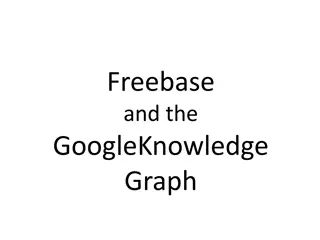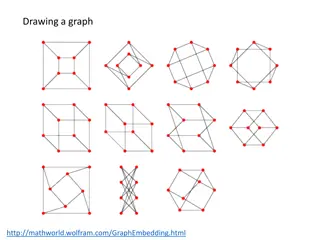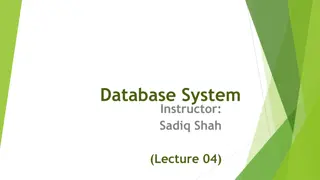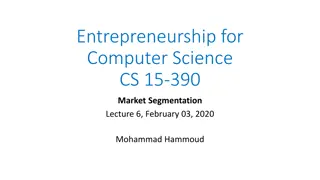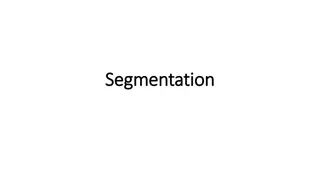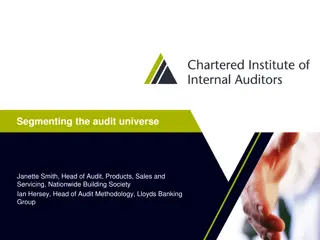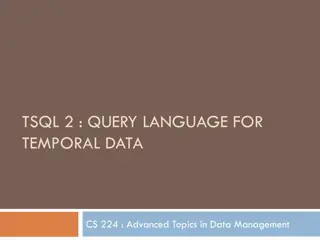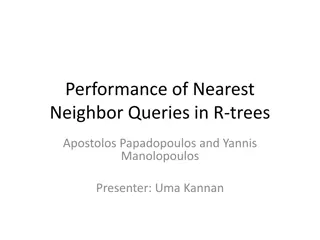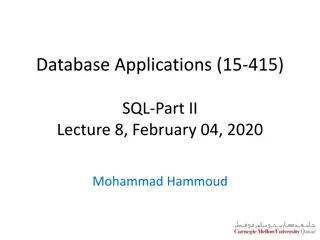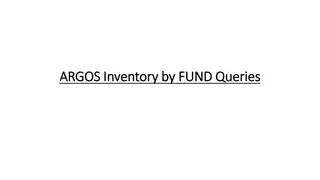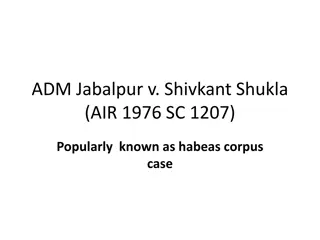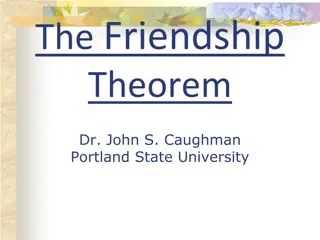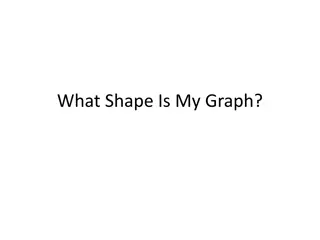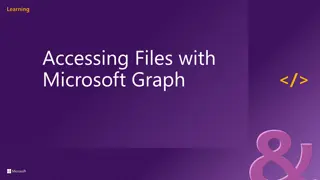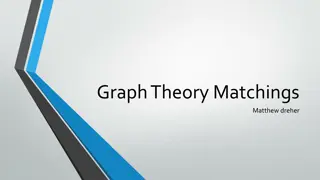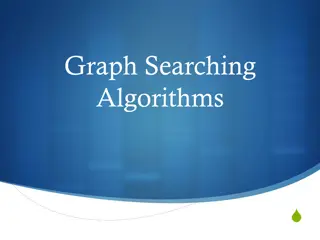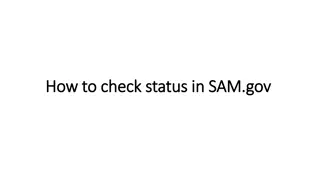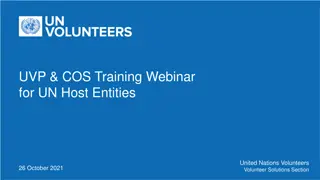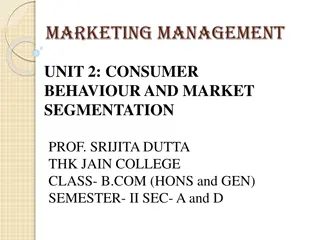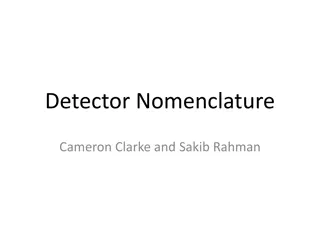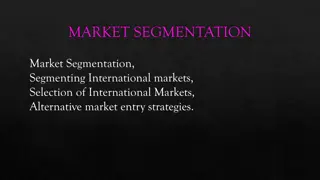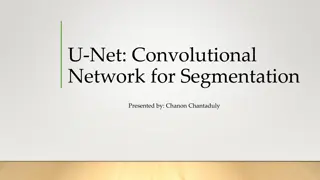Knowledge Graph and Corpus Driven Segmentation for Entity-Seeking Queries
This study discusses the challenges in processing entity-seeking queries, the importance of corpus in complementing knowledge graphs, and the methodology of segmentation for accurate answer inference. The research aims to bridge the gap between structured knowledge graphs and unstructured queries like telegraphic entity-seeking questions.
Download Presentation

Please find below an Image/Link to download the presentation.
The content on the website is provided AS IS for your information and personal use only. It may not be sold, licensed, or shared on other websites without obtaining consent from the author. Download presentation by click this link. If you encounter any issues during the download, it is possible that the publisher has removed the file from their server.
E N D
Presentation Transcript
KNOWLEDGE GRAPH AND CORPUS DRIVEN SEGMENTATION AND ANSWER INFERENCE FOR TELEGRAPHIC ENTITY-SEEKING QUERIES EMNLP 2014 MANDAR JOSHI UMA SAWANT SOUMEN CHAKRABARTI IBM RESEARCH IIT BOMBAY, YAHOO LABS IIT BOMBAY mandarj90@in.ibm.com uma@cse.iitb.ac.in soumen@cse.iitb.ac.in 1
ENTITY-SEEKING TELEGRAPHIC QUERIES Short Unstructured (like natural language questions) Expect entities as answers 2
CHALLENGES No reliable syntax clues Free word order No or rare capitalization, quoted phrases Ambiguous Multiple interpretations aamir khan films Aamir Khan - the Indian actor or British boxer Films - appeared in, directed by, or about Previous QA work Convert to structured query Execute on knowledge graph (KG) 3
WHY DO WE NEED THE CORPUS? KG is high precision but incomplete Work in progress Triples can not represent all information Structured unstructured gap Corpus provides recall fastest odi century batsman Corey Anderson hits fastest ODI century. This was the first time two batsmen have hit hundreds in under 50 balls in the same ODI. 4
ANNOTATED WEBWITH KNOWLEDGE GRAPH Type: /cricket/cricket_player Type: /people/profession instanceOf Entity: Corey_Anderson instanceOf /people/person/profession Entity: Cricketer mentionOf Corey Anderson hits fastest ODI century in mismatch ... was the first time two batsmen have hit hundreds in under 50 balls in the same ODI. Annotated document 5
SIGNALSFROMTHE QUERY Queries seek answer entities (e2) Contain (query) entities (e1) , target types (t2), relations (r), and selectors (s). query e1 r t2 s washington governor governor first washington first governor washington - governor first spider - automobile company - spider automobile company automobile company company spider Assignment of tokens to columns for illustration only; not necessarily optimal 7
SEGMENTATIONAND INTERPRETATION Interpretation = Segmentation + Annotation Segmentation of query tokens into 3 partitions Query entity (E1) Relation and Type (T2/R) Selectors (S) Multiple ways to annotate each partition washington first governor T2/R partition E1 partition S partition 1. Washington (State) 2. Washington_D.C. (City) r: governorOf t2: us_state_governor r: null t2: us_state_governor 8
COMBINING KG AND CORPUS EVIDENCE Segmentation Washington | first | governor washington first | governor Z E1 Entity language model T2 Type language model R Relation language model Selectors Query entity Target type Relation R S E1 T2 first washington first Washington (State) null governorOf null us_state_governor governor_general E1, R, E2 KG-assisted relation evidence potential T2, E2 Entity Type Compatibility E1, R, E2, S Corpus-assisted entity-relation evidence potential E2 Elisha Peyre Ferry Candidate entity 9
FROMQUERYTO ANSWER ENTITY Generate interpretations Retrieve snippets for each interpretation Construct candidate answer entities (e2) set Top k from corpus based on snippet frequency By KG links that are in interpretations set Inference query signals compatibility e2-t2 compatibility evidence from KG and corpus 10
RELATIONAND TYPE MODELS Objective: To map relation (or type) mentions in query to Freebase relation (or types) Relation Language Model ( R) Use annotated ClueWeb09 + Freebase triples Locate Freebase relation endpoints in corpus Extract dependency path words between entities Maintain co-occurrence counts of <words, rel> Assumption: Co-occurrence implies relation Type Language Model ( T2) Smoothed Dirichlet language model using Freebase type names 11
CORPUS POTENTIAL Estimates support to e1-r-e2-s in corpus Snippet retrieval and scoring Snippets scored using RankSVM Partial list of features #snippets with distance(e2 , e1 ) < k (k = 5, 10) #snippets with distance(e2 , r) < k (k = 3, 6) #snippets with relation r = #snippets with relation phrases as prepositions #snippets covering fraction of query IDF > k (k = 0.2, 0.4, 0.6, 0.8) 12
LATENT VARIABLE DISCRIMINATIVE TRAINING (LVDT) Constraints are formulated using the best scoring interpretation Training Inference q, e2 are observed; e1, t2, r and z are latent Non-convex formulation 13
EXPERIMENTS 14
TEST BED Freebase entity, type and relation knowledge graph ~29 million entities 14000 types 2000 selected relation Annotated corpus Clueweb09B Web corpus having 50 million pages Google (FACC1), ~ 13 annotations per page Text and Entity Index 15
TEST BED Query sets TREC-INEX: 700 entity search queries WQT: Subset of ~800 queries from WebQuestions (WQ) natural language query set [1], manually converted to telegraphic form Available at http://bit.ly/Spva49 TREC-INEX WQT Has type and/or relation hints Has mostly relation hints Answers from KG and corpus collected by volunteers Answers from KG only collected by turkers. Answer evidence from corpus (+ KG) Answer evidence from KG [1] Jonathan Berant, Andrew Chou, Roy Frostig, and Percy Liang. 2013. Semantic parsing on Freebase from question- answer pairs. In Empirical Methods in Natural Language Processing (EMNLP). 16
SYNERGY BETWEEN KG AND CORPUS KG only Corpus only Both 0.5 Unoptimized LVDT Unoptimized LVDT 0.4 0.3 MAP 0.2 0.1 0 TREC-INEX WQT Corpus and knowledge graph help each other to deliver better performance 17
QUERY TEMPLATE COMPARISON No Interpretation Type + Selector [2] Unoptimized LVDT 0.5 0.4 0.3 MAP 0.2 0.1 0 TREC-INEX WQT Entity-relation-type-selector template provides yields better accuracy than type-selector template [2] Uma Sawant and Soumen Chakrabarti. 2013. Learning joint query interpretation and response ranking. In WWW Conference, Brazil. 18
COMPARISONWITH SEMANTIC PARSERS Jacana Sempre Unoptimized LVDT 0.5 0.4 0.3 MAP 0.2 0.1 0 TREC-INEX WQT 19
QUALITATIVE COMPARISON Benefits of collective inference automobile company makes spider Entity model fails to identify e1 (Alfa Romeo Spider) Recovery: automobile company makes spider e1: Automobile t2: /../organization r : /business/industry/companies Limitations Sparse corpus annotations south africa political system Few corpus annotations for e2: Constitutional Republic Can t find appropriate t2 (/../form_of_government) and r (/location/country/form_of_government) 20
SUMMARY Query interpretation is rewarding, but non-trivial Segmentation based models work well for telegraphic queries Entity-relation-type-selector template better than type-selector template Knowledge graph and corpus provide complementary benefits 21
REFERENCES S&C: Uma Sawant and Soumen Chakrabarti. 2013. Learning joint query interpretation and response ranking. In WWW Conference, Brazil. Sempre: Jonathan Berant, Andrew Chou, Roy Frostig, and Percy Liang. 2013. Semantic parsing on Freebase from question-answer pairs. In Empirical Methods in Natural Language Processing (EMNLP). Jacana: Xuchen Yao and Benjamin Van Durme. 2014. Information extraction over structured data: Question answering with Freebase. In ACL Conference. ACL. 22
DATA TREC-INEX and WQT Short URL http://bit.ly/Spva49 Long URL https://docs.google.com/spreadsheets/d/1AbKBd FOIXum_NwXeWub0SdeG- y8Ub4_ub8qTjAw4Qug/edit#gid=0 Project page http://www.cse.iitb.ac.in/~soumen/doc/CSAW/ 23
THANKYOU! QUESTIONS? 24



